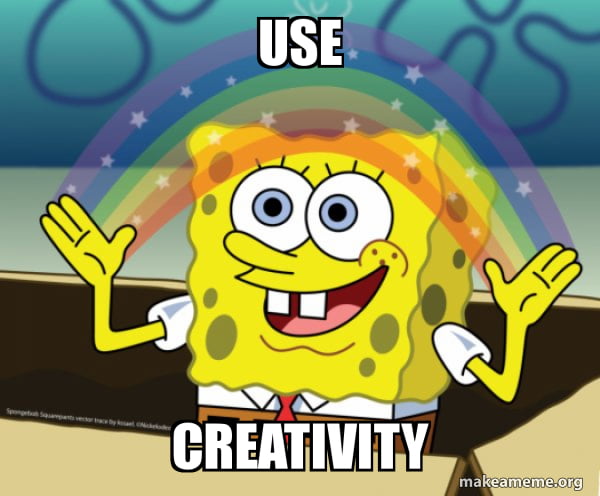Making a brand name
Creating a successful brand name requires specific steps that should be followed to ensure the name is meaningful, recognizable, and stands out to potential customers.
The first step is to research the target audience and competitors to better understand the market and how to differentiate yourself.
After that, it’s important to determine the focus and personality of the brand.
Afterward, brainstorm potential brand names that fit the criteria.
A linguistic screening should be conducted to filter out names with potentially negative connotations or unfamiliar or hard to pronounce.
It’s also important to check if the name is legally available, particularly regarding domains and social media handles.
Once a suitable name has been chosen, it’s essential to test it and incorporate it into all branding elements.
Finally, it’s important to ensure the brand name communicates its values to create an identity that resonates with the target market.
Here are some important elements you should consider in choosing a brand name:
- Relevant
- Appealing
- Unique
- Authentic
- Memorable
- Captures the quintessential nature of the business
- Triggers a positive emotional response
What makes a strong brand?
A strong brand leaves consumers with a positive first impression.
There are different types of brands, including generic and non-generic names.
Understanding these two types of names is important before picking a brand name for your company.
Generic brands can be applied to any product or service within a category.
For example, “coffee” is a generic term for any coffee beverage.
Non-generic brands are specific to one product or service.
For example, Starbucks is a non-generic brand because it refers to one specific type of coffee shop.
Choosing the right brand name can greatly benefit today’s media-saturated world.
It can help you attract new customers and keep the ones you have loyal to your business.

10 creative ways to sneak in brand awareness through your company name
Have you been wondering “how to come up with a brand name?”
There are numerous ways to establish a memorable and successful brand identity.
Metaphorical brand names like Nike, transparent names such as 5-Hour Energy, and two-in-one names such as Instagram are all effective for generating recognition and conveying a sense of what your company does.
By exploring these options, you can find the perfect organization names that will attract customers and spread brand awareness.
Here are 10 tips for sneaking in brand awareness through your business’s name
1. Acronyms
Acronyms can be incredibly helpful in promoting brand awareness of a business name.
Acronyms allow for a shorter, easier-to-remember name that customers can more quickly recognize.
Short and simple acronyms are punchy and easy to remember and can create a lasting impact on your target audience.
Additionally, acronym names are often easier to trademark than longer, more creative names.
They also hold the potential to create an unforgettable brand experience through brand design and positioning.
With the right branding, acronym names can help create a desired customer experience and evoke positive emotional responses.
Ultimately, acronyms can be a great tool for promoting brand recognition and awareness.
2. Word shapes
Word shapes are logos that turn your brand name, colors, and font into a visual identity.
They are often called “wordmarks” and are popular for creating a memorable logo name themes.
Wordmarks can be hard to create in a scalable square design and easily lose their legibility when shrunk.
It is often better to pair them with an accompanying icon logo or turn the first letter of the wordmark into a separate logo, as Facebook does with its F.
3. Draw a picture
Drawing a picture can help to include brand awareness in a business name by creating an instant and concrete image in prospects’ minds.
When someone hears your business name, a visual image should also be created to reinforce recognition.
Using a logo as a symbol of your brand is important, and it should be used on all of your materials, from your website to your business cards to your online ads.
Additionally, you should use interesting forms and consistent typography and create a color palette to enhance your identity.
Creating templates for emails, letters, business cards, and even email signatures will help make your business look more unified, credible, and professional.
Finally, make sure you have a set of brand guidelines that everyone follows to ensure your branding is consistent. With these steps, you can create memorable brand awareness for your business.

4. Name generators
Do name generators help include brand awareness in a business name? Indeed, they can be a useful way to generate creative and memorable brand names.
Using tools like free writing, word associations, and mind maps, you can often develop multiple brand ideas that could work for your business.
Additionally, using industry names in your search can yield the perfect domain name.
Furthermore, if you want to be sure your brand accurately reflects your products or services, you can use categories such as founder, descriptive, fabricated, metaphor, acronym, or magic spell names.
With the right steps, a name generator can greatly increase brand awareness of your business name.
5. Pop culture references
Pop culture references can be a great way to make your brand stand out and be memorable.
However, they can also be risky if they are too closely tied to a trend or fad that could go out of style relatively quickly.
Therefore, it is important to consider how well your brand nickname will stand the test of time if you decide to include a pop culture reference.
Additionally, it is important to ensure that the reference makes sense about the brand and its mission.
A brand name should be distinct, pique interest, make sense, and be malleable.
Ultimately, the best brand names are the ones that are easy to remember, unique, and have lasting appeal.
6. Brand consistency
Brand consistency is important for any business to create a successful brand name.
A consistent brand name is meaningful, distinctive, accessible, protectable, future-proof, and visual.
It must resonate with consumers, evoke a particular feeling, and be differentiated from competitors on the market.
It should also be flexible enough to survive for many years to come.
A logo is also vital in branding, as it’s the most recognizable part of the brand and should be consistent with the brand name.
Ultimately, brand consistency helps businesses to strengthen their connection with their customers and make a lasting impression.
7. Word roots
Word roots are a word’s basic components that can help identify its meaning.
Word roots derive from Latin and Greek languages and create new words when combined with prefixes and suffixes.
For example, the word root ‘graph’ comes from the Greek’ graphein,’ meaning ‘to write.’
When combined with a prefix, such as ‘tele’ meaning ‘far off,’ it creates the word ‘telegraph’ meaning ‘far off writing.’
Understanding word roots and how they can be combined with other components is a great way to build a strong vocabulary and understand how words are formed.

8. Make a list
Making a list is a great way to help create brand names because it allows you to brainstorm and explore different words that relate to your brand identity. By looking online, thesaurus uses synonyms, antonyms, metaphors, and phrases to generate ideas.
By taking the time to make a list, you can look for potential brand names that fit your brand objectives and have positive connotations.
Making a list is useful for generating unique, memorable brand names.
9. Brand personality
Brand personality is essential for creating a sure response in your target audience.
It helps to make a rather mundane item more attractive and memorable.
By creating a brand personality, you give your brand a face and a voice that potential customers can relate to and trust.
A well-developed brand identity instills credibility and trust in the marketplace and allows you to advertise your brand more effectively.
Additionally, it gives your company a mission and a purpose that sets it apart from its competitors.
All of these elements are essential for creating a successful and recognizable brand.
Here’s how to conduct your research to improve your brand personality:
Step 1: Research your target audience and competitors
Before developing a brand name that will resonate with your target audience, you need to understand who they are and what they need.
Conduct market research to learn more about your target audience and their demographic information.
You’ll also want to research your competitors to understand what they’re doing and how you can differentiate yourself.
Step 2: Pick your focus and personality
Once you know who your customers are, it’s time to determine your brand’s focus and personality.
Think about the message you want to communicate and the type of impression you want to make.
Brainstorm adjectives that describe your brand’s message and personality, and ensure that these words are reflected in your brand name.
Step 3: Choose your business name
Once you’ve narrowed down your list of adjectives, you can begin generating potential brand names.
Brainstorm relevant words and create a list of names that convey your brand message.
You’ll want to conduct a linguistic screening to ensure that the name you choose has the right connotations and doesn’t have any negative meanings in other languages.
Step 4: Write your slogan
Your slogan should reflect your brand’s core values and make it easy for customers to remember what your business stands for.
Consider using a play on words or a phrase that’s catchy and memorable.

Step 5: Choose the look of your brand
Your brand’s visual identity should complement your brand name and make it easy for customers to identify your business.
Choose colors and font styles that evoke the emotion and feeling that you want customers to associate with your brand.
Step 6: Design your brand logo
Your logo is one of the most important parts of your brand identity.
It should be simple, memorable, and instantly recognizable.
Consider hiring a professional graphic designer to create a logo that will stand out from the competition and be memorable to potential customers.
Step 7: Apply your branding across your business
Once you’ve chosen your brand name and designed your logo, you’ll want to ensure that your branding is consistent across all your sales materials and marketing efforts.
Establish brand guidelines and ensure that everyone who works with your business follows them.
10. Research your competition
Researching your competition is an essential part of creating an effective brand name.
It helps you identify the gaps and opportunities in the market and develop a unique brand name that stands out from the competition.
You must understand the current market, potential customers and competitors, and what makes your brand unique.
You should research the direct and indirect competitors when you Google your product or service category and look at the relevant social media accounts or pages your target audience follows.
Talk to people in your target market, shop online and offline, and take notes of established and known brands.
By analyzing your competition, you can identify the areas where your brand can make a difference and create a brand name that resonates with your target audience.

What does it mean to build brand awareness?
Building brand awareness means creating an identity that is recognizable and memorable.
It involves using consistent type, color, images, and language to create a brand identity that resonates with customers and makes them instantly recognize you.
Brand awareness also involves tracking key performance metrics to gauge how people talk about and interact with your business, such as using Google Analytics, surveys, comments, and social media discussions.
Ultimately, it’s about creating a promise of quality and design that customers can trust and ensuring that all your marketing efforts align with that promise.
Here are some benefits of brand awareness:
- Increased recognition – A great brand will make your products more recognizable and stand out from the competition.
- Trackable success – Measure the success of your brand by tracking key performance metrics such as Google Analytics, surveys, comments, and social media discussions.
- Increased trust – Building trust with your customers by clearly communicating your brand’s unique values and benefits.
- Easier marketing – Easier and more efficient marketing when your brand is recognizable and remembered.
- Niche differentiation – Identify and differentiate your product from your competitors by clearly understanding your niche and current trends.
- Lasting impression – Create a lasting impression on your customers with an eye-catching logo, type, colors, images, and language.
Creative ways to make your brand name known
Building a successful brand requires research, focus, and creativity.
From determining your brand’s values to creating a logo and corporate identity, this guide will help you create a powerful and recognizable brand name.
To start, get to know your target market and competitors and choose your brand’s focus and personality.
Brainstorm potential brand names and conduct a linguistic screening to ensure your name is available.
Test the name the make sure it resonates with your target customers, and don’t forget to incorporate it everywhere.
Next, create a color palette and pay attention to typography when designing your logo and brand identity.
These are key elements that will help you build a recognizable brand.
Finally, use the right marketing strategies to spread the word about your brand and make it known.
Following these steps, you can create a brand name with which your target customers will recognize and connect.
With a great brand identity, you’ll be able to set yourself apart from the competition and gain a loyal customer base.
Get a custom domain name for your business
When starting a business, finding the perfect domain for a custom URL shortener is important.
This is because it’s easier for customers to remember and share a short, unique link rather than a long one.
A lot of people use CBD products because they’re eco-friendly and healthy.
The TRUiC Free Online Business Name Generator provides suggestions for brand names.
It also checks to ensure the domain name is available, making it a great generator.
Get a professional website
Nowadays, businesses need to have a website.
Not only does this give customers a way to learn more about your company, but it also shows that you are professional and invested in your business.
There are many different ways to create a website.
If you don’t know how to code, many platforms allow you to create a website without having any coding knowledge.
These platforms typically have templates that you can use, or they will allow you to customize the look and feel of your website.
You can create a custom website from scratch if you are comfortable coding. This gives you more flexibility in terms of design and functionality, but it requires more work on your part.
No matter your route, it’s important to ensure your website is mobile-friendly.
More people are using their phones and tablets to browse the internet, so if your website isn’t responsive, they will likely have a bad experience.
Creating a professional website doesn’t have to be expensive.
There are many free options available online.
However, there are affordable options if you want something that looks more customized or has more features.

Use creative marketing strategies
Creative marketing strategies are an essential part of establishing a successful brand.
They enable you to reach and engage with your target audience, differentiate from your competitors, and build a strong emotional connection with your customers.
Through creative marketing, you can create a distinct identity for your brand that customers can easily recognize and relate to.
Knowing trends in your niche and your competition is important to craft a positioning that stands out from the rest.
- Stake your claim: Use a tagline or slogan that lets customers know what your product or service offers and why it stands out from the competition.
- Make it a metaphor: Try using a metaphor to grab attention and help customers better understand the unique qualities of your product or service.
- Adopt your customers’ attitude: Reflect the attitudes and values of your target customers with your slogan.
- Leverage labels: Use words that accurately describe your offering and attract your target customer.
- Write a rhyme: Rhyming words can be a fun and effective way to convey your message and make your product or service memorable.
- Describe it literally: Be straightforward and tell customers what you’re offering in a few words.
- Create mockups: Make sure your brand name looks visually and sounds good when spoken out loud.
- Test your brand: Try out your brand names and slogans with consumer research to see which are the most successful.
- Create a brand strategy: Build a cohesive brand strategy that includes your website, logo, colors, store layout, tagline, and marketing.
How do you know if your brand awareness efforts are working?
Brand awareness is important to promote your brand.
As you scale your brand, it’s important to make sure that you maintain consistency and don’t sacrifice authenticity in the process.
To measure the effectiveness of your brand awareness efforts, look at factors such as increased web traffic, higher conversion rates, and more social media followers.
Brand awareness is an important metric that can be used to evaluate marketing efforts.
By tracking social media interactions and website conversions, businesses can measure the effectiveness of different advertising channels.
This data can help businesses make more informed decisions about allocating their marketing resources.





![10 [Great] Tips to Help You Create an Effective Real Estate Branding](https://www.profilemonk.com/wp-content/uploads/2022/08/real-estate-branding-how-to-create-a-brand-for-your-real-estate-business-768x384.png)

